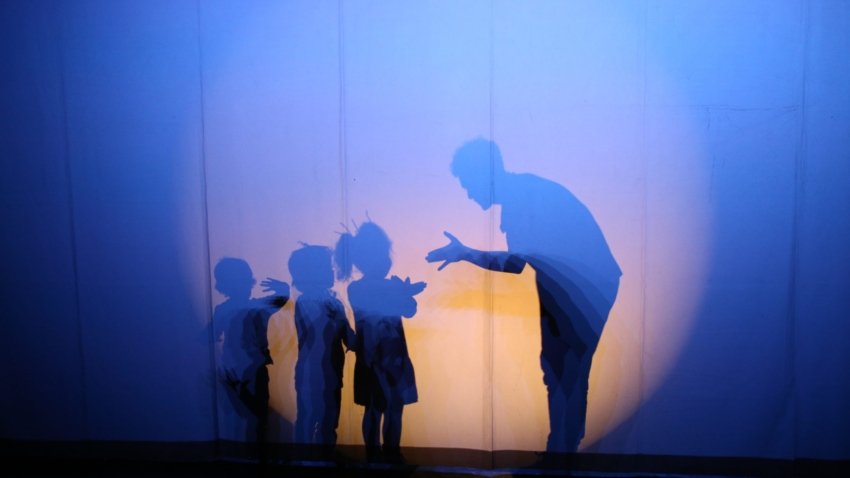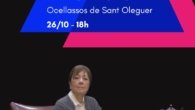
Stage in play: Three years of shared creation and collective learning
On June 30, a very special day was at Nau Ivanow: the closing of the first stage of the project Scene at stakea project shared between Nau Ivanow and the Escola Estel, which, over three courses, has grown as a living space for research, co -creation and transformation through dialogue between art and education.
This project was born as a blank sheet; Neither of the two institutions had ever done an art and education project, but we decided to embark on this adventure that has transformed us all. The ignorance and the lack of initial experience has been beneficial for the project: none of the parties wanted to impose a closed model and has given room for knowledge, in this regard and active listening. This has allowed us to generate shared language and build a unique project together, rooted in the needs and potentialities of the two spaces.
During these three years, Scene at stake He has gathered more than 200 sessions in the classroom with about twenty artists, 60 hours of shared training, visits to different exhibition spaces in the city and the active participation of more than thirty families. But beyond the figures, the value of the project is in the links that it has generated, in the transformation of eyes and the complicity that today unites artists, teachers, children, families and creation center.
Last Monday we experienced a day of thought and reflection, in which teachers, artists and the team of La Nau, we could share and generate spaces to think, enjoy and enrich each other; A day that gave us space and time to look back and value everything we have lived in these three years of project.
One of the great strengths of the project has been his ability to generate deep and significant experiences and learning for all parties involved. In this sense, the cloister emphasized that it had discovered new ways to inhabit the classroom and learned in the way of doing and thinking of the artists, beyond the same artistic practice, moving away from rigid schemes and integrating art as a way to rethink educational practice.
“The scene at play has helped to expand the imaginary of what is possible inside the classroom, linking what is sensitive to what is pedagogical […] Turning the school into a space where art is not only taught, but also lives, experimenting and thinking. “
Another teacher stated: “I bring myself precious feelings and emotions, going beyond the schemes and the value of creating from doubt and uncertainty.”
The artists, on the other hand, have found in the school a space to expand and enrich their artistic research. As one of them said: “Sharing this experience with the school has given the entity to my project. I have nourished the findings of the children, I have asked new questions and discovered other ways of asking.”
Families have also lived the project as a transformative opportunity. They have participated in workshops, shared quality time with their sons and daughters, and known and inhabited the Nau Ivanow, a facility they had seen outside so many times in the neighborhood. “We now understand artistic practice in a different way. We face the creation processes and eyes.”
They also emphasized that they became aware of the different ways of learning and how it had been a gift to be able to share with creatures spaces like this, outside the routine. “My children do not want to miss school on stage days at stake.”
One of the great hits ofScene at stake It has been the permeability between Nau Ivanow and the neighborhood. The creation space has been opened to the educational community and, at the same time, the school has entered the ship. This bidirectional relationship has broken symbolic walls and has generated a shared space where art and education can be found daily.
The ship was not only an physical space, but an active agent who has accompanied, heard and sustained the project, transforming into this process. This complicity has been key to generating links that transcend specific activities to generate sustained trust relationships over time.
At the pedagogical level, the project has served to emphasize the process above the result, the value of intuition and the need to respect the learning times. He has shown that the arts can be a valuable methodological tool, capable of connecting knowledge, emotions and experiences.
Beyond all the learning we have accumulated, the experimentation and the “maturation” of the project; Scene at stake It has been a space of enjoyment, of trying and mistaken, of inhabiting the uncertainty and to be surprised, for the children, but also for the adults.
With closing this first stage, Scene at stake It does not end, it is transformed. The accumulated learning, weaving relationships and open questions point to a new phase where the project will be able to grow, consolidate. The ship will continue to be present, accompanying from dialogue, listening and responding to the needs that the school detects.
This new stage is born with the aim of consolidating what has been sown and to continue to deepen the integration of the arts in the day -to -day life of the center. Because as one of the teachers says: “Girls and boys learn more about who we are than what we do.”and art, lived in a shared way, transforms what we are.
Scene at stake It has been, is and wants to continue to be a space where art and education come together to imagine other ways of being, learning and living in community.






